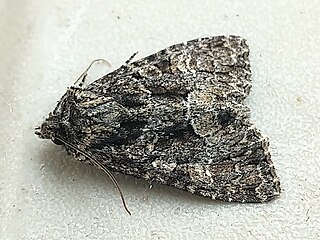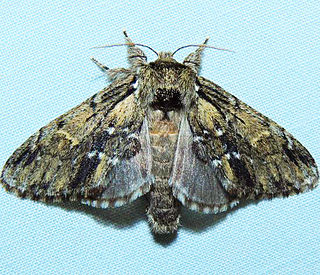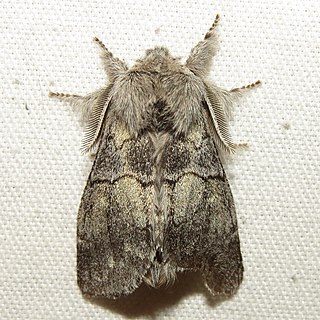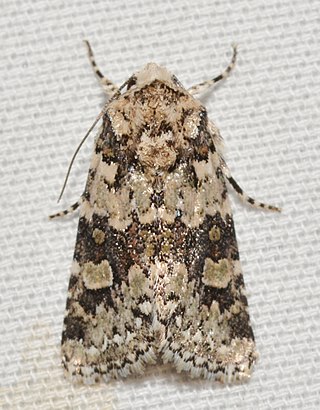
Platypolia mactata, the adorable brocade, is a species of cutworm or dart moth in the family Noctuidae. It is found in North America.
Dichagyris kyune is a species of cutworm or dart moth in the family Noctuidae. It was first described by William Barnes in 1904 and it is found in North America.
Paradiarsia littoralis, the Labrador dart moth, is a species of cutworm or dart moth in the family Noctuidae. It is found in North America.
Dichagyris lobato is a species of cutworm or dart moth in the family Noctuidae. It was first described by William Barnes in 1904 and it is found in North America.
Sympistis piffardi, the three-striped oncocnemis, is a species of moth in the family Noctuidae. It is found in North America.
Dichagyris socorro is a species of cutworm or dart moth in the family Noctuidae. It was first described by William Barnes in 1904 and it is found in North America.
Datana robusta, the annual buttonweed or robust datana moth, is a species of moth in the family Notodontidae. It was first described by Herman Strecker in 1878 and it is found in North America.
Sigela eoides, the youthful sigela moth, is a species of moth in the family Erebidae. It was first described by William Barnes and James Halliday McDunnough in 1913 and it is found in North America.
Cucullia strigata, the streaked hooded owlet or streaky falconer, is a species of moth in the family Noctuidae. It was first described by Smith in 1892 and it is found in North America.
Sympistis deceptiva is a species of moth in the family Noctuidae. It was first described by William Barnes and Arthur Ward Lindsey in 1922 and it is found in North America.
Amolita fratercula is a species of moth in the family Erebidae first described by William Barnes and James Halliday McDunnough in 1912. It is found in North America.
Deinopa angitia is a species of moth in the family Erebidae first described by Herbert Druce in 1891. It is found in Central and North America.
Lacinipolia aileenae is a moth genus or species of cutworm or dart moth in the family Noctuidae. It is found in North America.

Rifargia lineata is a species of moth in the family Notodontidae. It was first described by Druce in 1887 and it is found in North America.
Euxoa xasta is a species of cutworm or dart moth in the family Noctuidae first described by William Barnes and James Halliday McDunnough in 1910. It is found in North America.

Hyperaeschra georgica, the Georgian prominent, is a species of moth in the family Notodontidae. It was first described by Gottlieb August Wilhelm Herrich-Schäffer in 1855 and it is found in North America and parts of Australia.

Gluphisia lintneri, the Lintner's gluphisia moth or Lintner's pebble, is a species of moth in the family Notodontidae. It was first described by Augustus Radcliffe Grote in 1877 and it is found in North America.
Tripudia damozela is a species of moth in the family Noctuidae. It was first described by Harrison Gray Dyar Jr. in 1914 and it is found in Central and North America.

Lacinipolia buscki is a species of cutworm or dart moth in the family Noctuidae first described by William Barnes and Foster Hendrickson Benjamin in 1927. It is found in Australia and North America.

Pseudobryomima muscosa, the mossy pseudobryomima, is a species of cutworm or dart moth in the family Noctuidae. It is found in North America.





